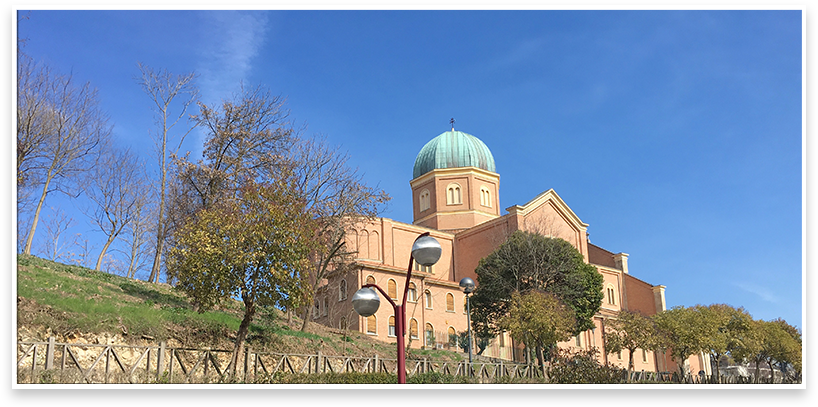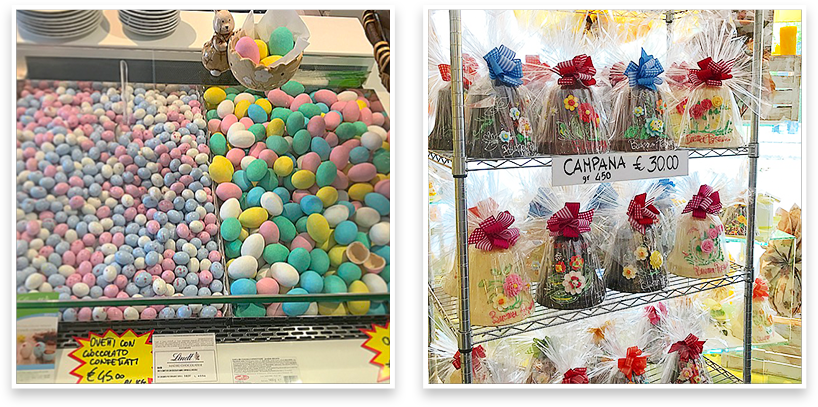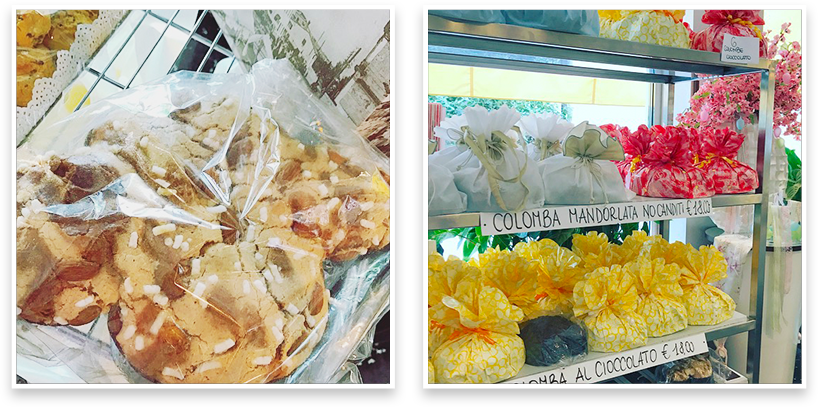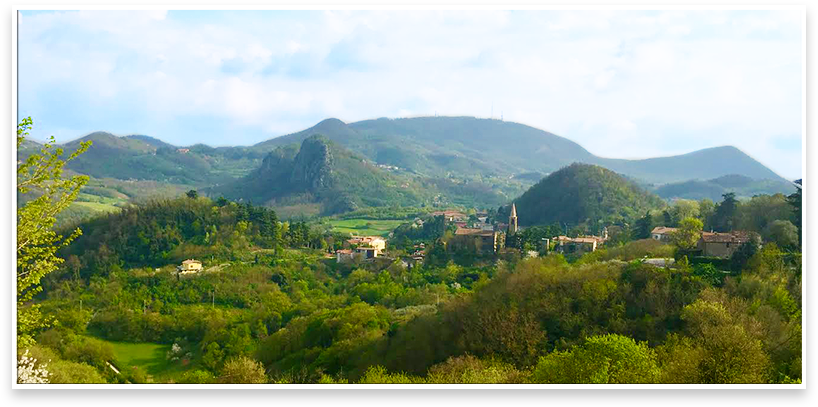Picnic all’italiana
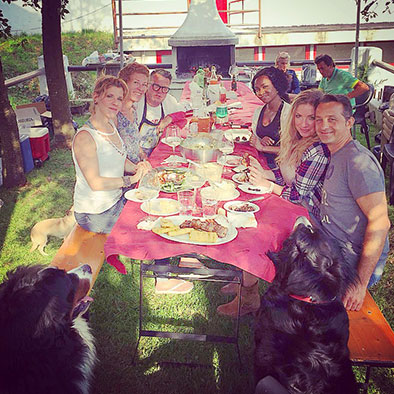 It’s common knowledge that Italy offers some of the world’s most renowned dining experiences ranging from Michelin star fine dining establishments to hidden gems like off the beat trattorias, but do not underestimate the quality gastronomic experience a properly organized outdoor picnic can provide. Spring through Fall, Italians always find an excuse to get outdoors and the art of the picnic is no exception: what’s better than feasting on delicious regional specialties and sipping luscious wines in good company while doing it all at a budget nonetheless?!
It’s common knowledge that Italy offers some of the world’s most renowned dining experiences ranging from Michelin star fine dining establishments to hidden gems like off the beat trattorias, but do not underestimate the quality gastronomic experience a properly organized outdoor picnic can provide. Spring through Fall, Italians always find an excuse to get outdoors and the art of the picnic is no exception: what’s better than feasting on delicious regional specialties and sipping luscious wines in good company while doing it all at a budget nonetheless?!
In order to gather all the essentials of a truly authentic Italian picnic toss your reusable shopping bags in the front basket of your bicicletta (bicycle) and hit the village streets like a true local. In under an hour you can hit a half dozen of the following neighborhood negozi (shops) to score local goodies fundamental to creating the most perfetto picnic all’italiana.
Panificio (bakery): first and foremost don’t forget the pane! Grab some crusty loaves of rustic bread, soft rosemary focaccias or simple sandwich rolls, available in various types of flour and grains depending on your taste. Artisanal breadsticks & pizzette (mini pizzas) are always a good idea to stock up on too while you’re there.
Salumeria (deli): get lost in bountiful displays of aged hams, Fratelli Beretta salami and roasts including mortadella, parma ham and porchetta. Order by the “etto”( 100gr) so you can taste a number of different specialties.
Latteria (cheese shop): pick a few of your favorites from classic fresh mozzarella pearls simply served on toothpicks to aged parmiggiano easy enough to crumble and pair with some local honey.
Enoteca (wine shop): now that you’ve got your main ingredients down it’s time to hit the wine shop to find the perfect vino to enhance your authentic spread- don’t be hesitant to try the local wines available on draft, the shop assistant will just use any empty water bottles you bring.
Fruttivendolo (fresh produce shop): these mom & pop style shops offer seasonal fruit and vegetables so look for picnic friendly options like clementines, apples or sliced melon depending on the season. A handful of nuts and a small container of marinated olives are always a winning addition as well.
Pasticceria (pastry shop): Don’t forget to pick out a few pastine (mini pastries) like almond tarts or chocolate truffles to pair with that glass of sweet dessert wine at the end of the meal.
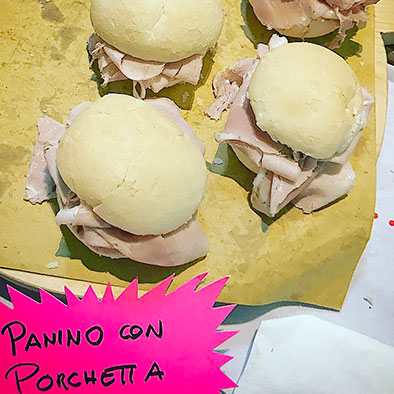 If you’re not in the mood to embark on a such a cultural adventure by meandering through these shops you can always just run into a paninoteca (sandwich shop) for a classic brown bag style picnic and have them make up a few plain panini (sandwiches). Otherwise a local rosticceria (fry shop) will offer a small selection of ready-made sides and “take away” roast chickens. Either way, with just less than 10 euros a person a real Italian feast fit for a king can be thrown together pretty quickly, especially when a bunch of friends meet up to share the potluck affair.
If you’re not in the mood to embark on a such a cultural adventure by meandering through these shops you can always just run into a paninoteca (sandwich shop) for a classic brown bag style picnic and have them make up a few plain panini (sandwiches). Otherwise a local rosticceria (fry shop) will offer a small selection of ready-made sides and “take away” roast chickens. Either way, with just less than 10 euros a person a real Italian feast fit for a king can be thrown together pretty quickly, especially when a bunch of friends meet up to share the potluck affair.
Don’t forget basic picnic supplies, especially a good knife and a corkscrew for that divine wine!
Ideal picnic spots aren’t just majestic hilltops and wild flower fields- get creative and find a cozy spot even in the larger cities including parks and gardens, just not directly at a major monument.
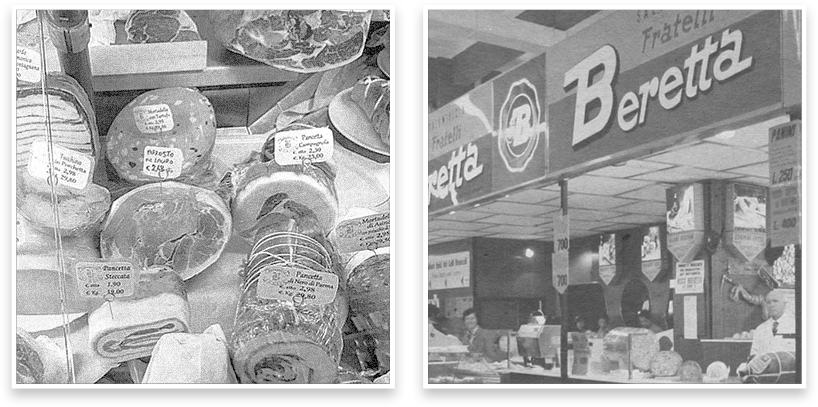
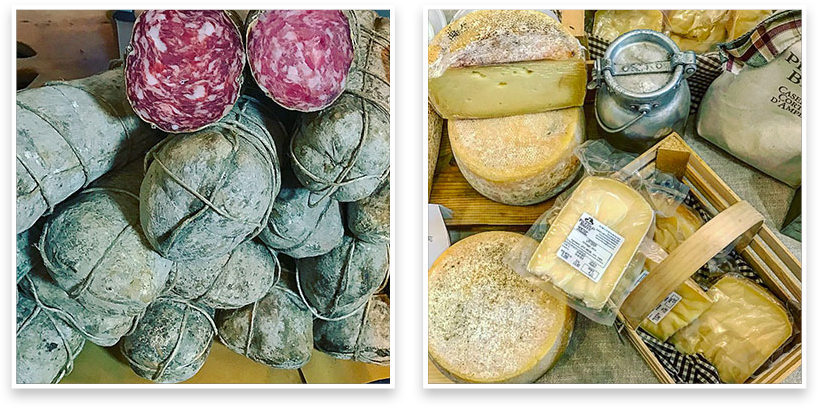
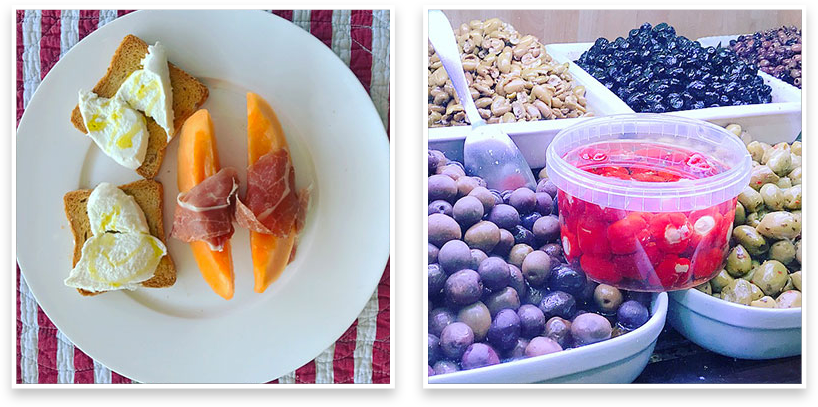

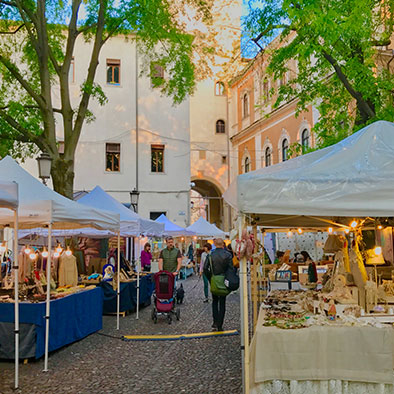 One of the best ways to experience local culture in Italy is to visit & explore various regional open air markets. For a true glimpse and taste of the “la dolce vita” dive into an authentic piazza “mercato”: you name it and you can usually find it from fresh produce, fish, meat, salami, cheese, honey, chocolate, spices, pasta, rice, nuts, wine, flowers, plants, clothing, antiques, hardware, linens, purses, luggage and eyewear. From medieval village squares to the main cities’ large piazzas, outdoor markets are abound this time of year. Typical setups range from old-world charm permanent stone arcade stalls to simple tent-like booths. Italian vendors put on quite a display of goods- these are not your basic farmers markets so take your time to stroll around and absorb the authentic atmosphere.
One of the best ways to experience local culture in Italy is to visit & explore various regional open air markets. For a true glimpse and taste of the “la dolce vita” dive into an authentic piazza “mercato”: you name it and you can usually find it from fresh produce, fish, meat, salami, cheese, honey, chocolate, spices, pasta, rice, nuts, wine, flowers, plants, clothing, antiques, hardware, linens, purses, luggage and eyewear. From medieval village squares to the main cities’ large piazzas, outdoor markets are abound this time of year. Typical setups range from old-world charm permanent stone arcade stalls to simple tent-like booths. Italian vendors put on quite a display of goods- these are not your basic farmers markets so take your time to stroll around and absorb the authentic atmosphere.
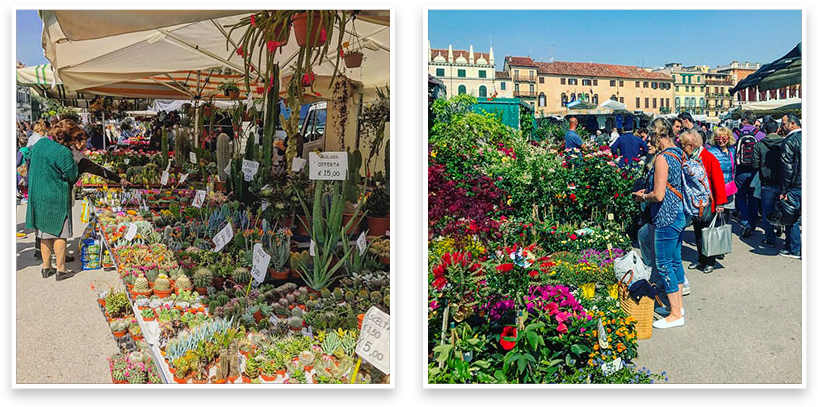
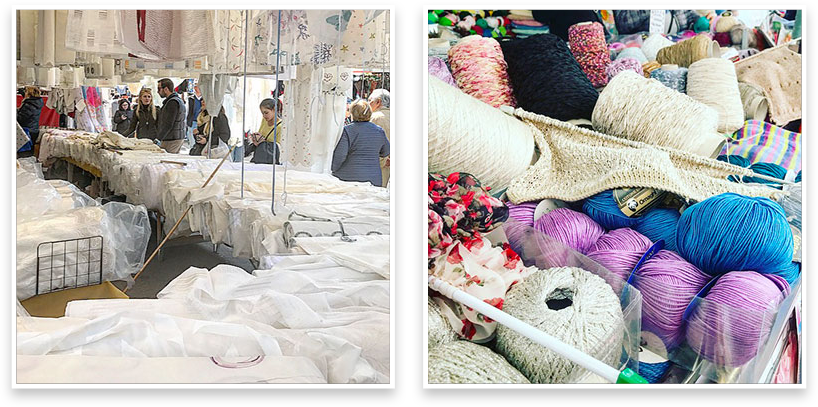
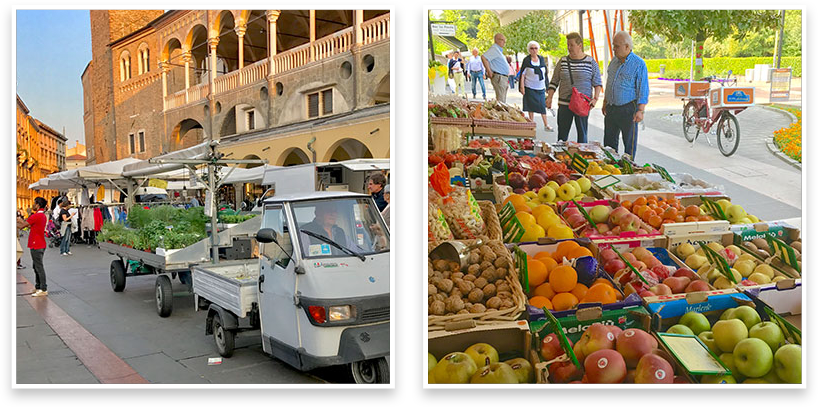
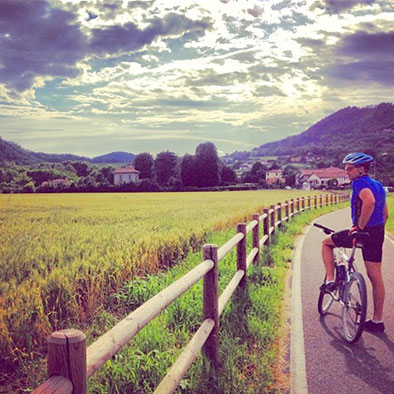 With the arrival of sunnier, warmer days, Spring in Italy is the perfect time of year to spend more time outdoors. Mild temperatures and longer daylight hours provide ideal conditions for leisure activities. Italians thrive on being in touch with nature so the cool aria fresca (fresh air) of early Spring allows for numerous opportunities to head outside before the real summer Italian heat kicks in. Of course this season is beautiful in many regions of the world, but the Bel Paese truly offers magical and stunning views of verdant landscapes over the next couple of months. It’s also an ideal time to travel as the tourist season is just commencing, so, before the hordes of international crowds arrive, many Italians take mini vacations & road trips across the peninsula to discover new captivating places.
With the arrival of sunnier, warmer days, Spring in Italy is the perfect time of year to spend more time outdoors. Mild temperatures and longer daylight hours provide ideal conditions for leisure activities. Italians thrive on being in touch with nature so the cool aria fresca (fresh air) of early Spring allows for numerous opportunities to head outside before the real summer Italian heat kicks in. Of course this season is beautiful in many regions of the world, but the Bel Paese truly offers magical and stunning views of verdant landscapes over the next couple of months. It’s also an ideal time to travel as the tourist season is just commencing, so, before the hordes of international crowds arrive, many Italians take mini vacations & road trips across the peninsula to discover new captivating places.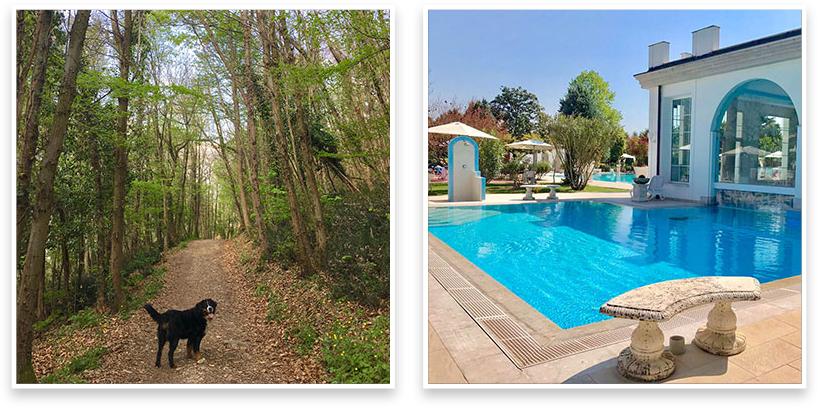
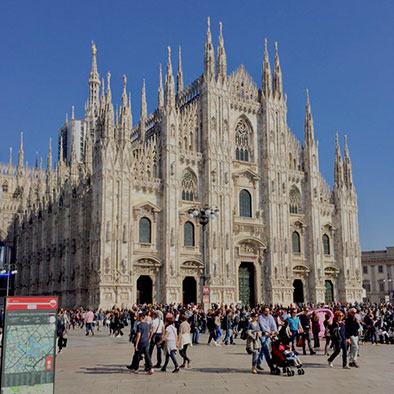 L’ACQUA
L’ACQUA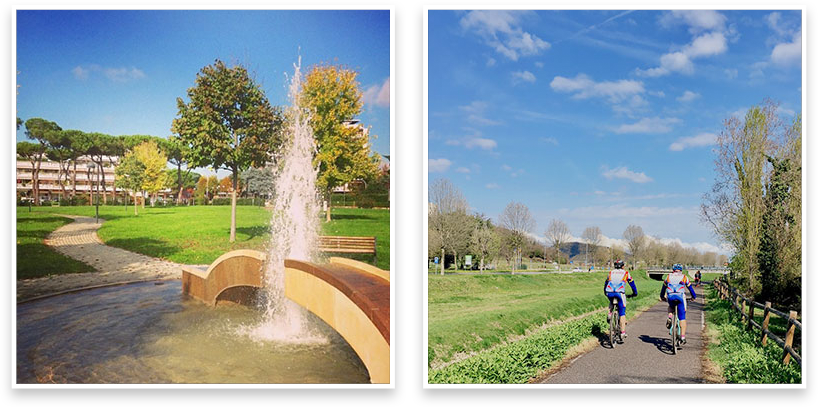
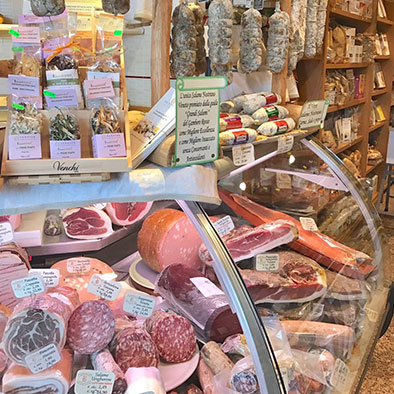 Easter celebrations throughout the Italian peninsula are many and quite diverse, as Pasqua is one of the most festive occasions of the year for Italians, second only to Christmas. Easter marks the end of a time of reflection during the period of Lent and then culminates with the joyous celebration of Christ’s resurrection. The celebrations in Italy extend over a course of several days as opposed to just Easter Sunday. From the southern tip to the north, towns and villages during the settimana santa, or Holy Week, hold traditional religious processions and rites, popular feasts and folkloristic festivities including food fairs and performances. With the sun shining bright longer into the evenings, Italians literally head to the narrow streets of centro storico into the main piazzas all week culminating on Easter Sunday to take part in parades and commemorations to honor this significant and joyous religious holiday.
Easter celebrations throughout the Italian peninsula are many and quite diverse, as Pasqua is one of the most festive occasions of the year for Italians, second only to Christmas. Easter marks the end of a time of reflection during the period of Lent and then culminates with the joyous celebration of Christ’s resurrection. The celebrations in Italy extend over a course of several days as opposed to just Easter Sunday. From the southern tip to the north, towns and villages during the settimana santa, or Holy Week, hold traditional religious processions and rites, popular feasts and folkloristic festivities including food fairs and performances. With the sun shining bright longer into the evenings, Italians literally head to the narrow streets of centro storico into the main piazzas all week culminating on Easter Sunday to take part in parades and commemorations to honor this significant and joyous religious holiday.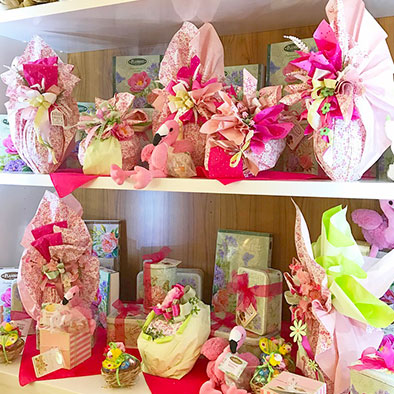 Another ancient folk ceremony not to be missed is the famous Scoppio del Carro (Explosion of the Cart) event held in Florence on Easter Sunday morning. An antique cart, packed full with fireworks, is paraded through town pulled by white oxen adorned with flowers & herbs and surrounded by townspeople dressed in period costumes. At the end of the procession it gets set up in front of the Cathedral of Santa Maria del Fiore where it is finally ignited by a fuse attached to a dove-shaped rocket holding an olive branch – a successful explosion is said to bring good harvest & luck. Of course solemn mass is held all across the Bel Paese. In Vatican City on Good Friday the Pope retraces Christ’s Via Crucis during a ceremonious candlelit procession that leads to mass in St. Peter’s Square where thousands of pilgrims gather to participate.
Another ancient folk ceremony not to be missed is the famous Scoppio del Carro (Explosion of the Cart) event held in Florence on Easter Sunday morning. An antique cart, packed full with fireworks, is paraded through town pulled by white oxen adorned with flowers & herbs and surrounded by townspeople dressed in period costumes. At the end of the procession it gets set up in front of the Cathedral of Santa Maria del Fiore where it is finally ignited by a fuse attached to a dove-shaped rocket holding an olive branch – a successful explosion is said to bring good harvest & luck. Of course solemn mass is held all across the Bel Paese. In Vatican City on Good Friday the Pope retraces Christ’s Via Crucis during a ceremonious candlelit procession that leads to mass in St. Peter’s Square where thousands of pilgrims gather to participate.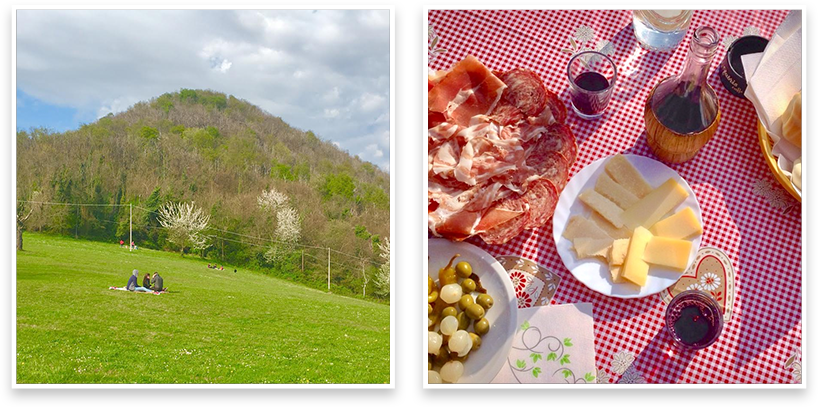 Chocolate bunnies are not the common Easter treat in Italy like in the US, but rather intricately decorated precious chocolate eggs are the traditional gift. Supermarket aisles are stacked high with industry produced eggs, mostly for young children, rigorously made with a special sorpesa (surprise) inside. Every well- respected pastry shop and bakery produces their own finely handmade chocolate eggs- you can even pre-order and have them place a special present inside for your loved ones. Romantic tradition has seen young Italian couples get engaged this way with the ring being place inside the ultra-special premium egg. The other famous Italian Easter dessert is the Colomba , a light and fragrant dove-shaped cake similar to the well-known Christmas version, the panettone. The Colomba is usually topped with almonds and sugar before being baked and is available with or without candied peel inside. Many manufacturers are also now offering unique fillings including limoncello or Nutella.
Chocolate bunnies are not the common Easter treat in Italy like in the US, but rather intricately decorated precious chocolate eggs are the traditional gift. Supermarket aisles are stacked high with industry produced eggs, mostly for young children, rigorously made with a special sorpesa (surprise) inside. Every well- respected pastry shop and bakery produces their own finely handmade chocolate eggs- you can even pre-order and have them place a special present inside for your loved ones. Romantic tradition has seen young Italian couples get engaged this way with the ring being place inside the ultra-special premium egg. The other famous Italian Easter dessert is the Colomba , a light and fragrant dove-shaped cake similar to the well-known Christmas version, the panettone. The Colomba is usually topped with almonds and sugar before being baked and is available with or without candied peel inside. Many manufacturers are also now offering unique fillings including limoncello or Nutella. A truly springtime occasion, Pasqua coincides with nature’s awakening marked by flourishing gardens and blossoming orchards, finalmente the end of winter. Easter Monday, known as Pasquetta (literally “Little Easter”) is also a national holiday in Italy. Since Easter Sunday is spent with family in church and then at home for the traditional meal, the usual custom on Pasquetta is to be with friends celebrating outdoors. The saying goes “Natale con i tuoi. Pasqua con chi vuoi.”, meaning “Christmas with family but Easter with whomever you want!”. Weather permitting, the Italians take mini road trips and head to the hills, countryside, woods and natural reserves for the famous Pasquetta picnic: some go all out & prepare a lavish barbecue style lunch while other groups keep it simple and make traditional picnic baskets filled with fresh breads, salami, cheese and of course vino. In recent years it has also become custom to take short trips to other European cities with a group of friends to celebrate the promise of new beginnings.
A truly springtime occasion, Pasqua coincides with nature’s awakening marked by flourishing gardens and blossoming orchards, finalmente the end of winter. Easter Monday, known as Pasquetta (literally “Little Easter”) is also a national holiday in Italy. Since Easter Sunday is spent with family in church and then at home for the traditional meal, the usual custom on Pasquetta is to be with friends celebrating outdoors. The saying goes “Natale con i tuoi. Pasqua con chi vuoi.”, meaning “Christmas with family but Easter with whomever you want!”. Weather permitting, the Italians take mini road trips and head to the hills, countryside, woods and natural reserves for the famous Pasquetta picnic: some go all out & prepare a lavish barbecue style lunch while other groups keep it simple and make traditional picnic baskets filled with fresh breads, salami, cheese and of course vino. In recent years it has also become custom to take short trips to other European cities with a group of friends to celebrate the promise of new beginnings.